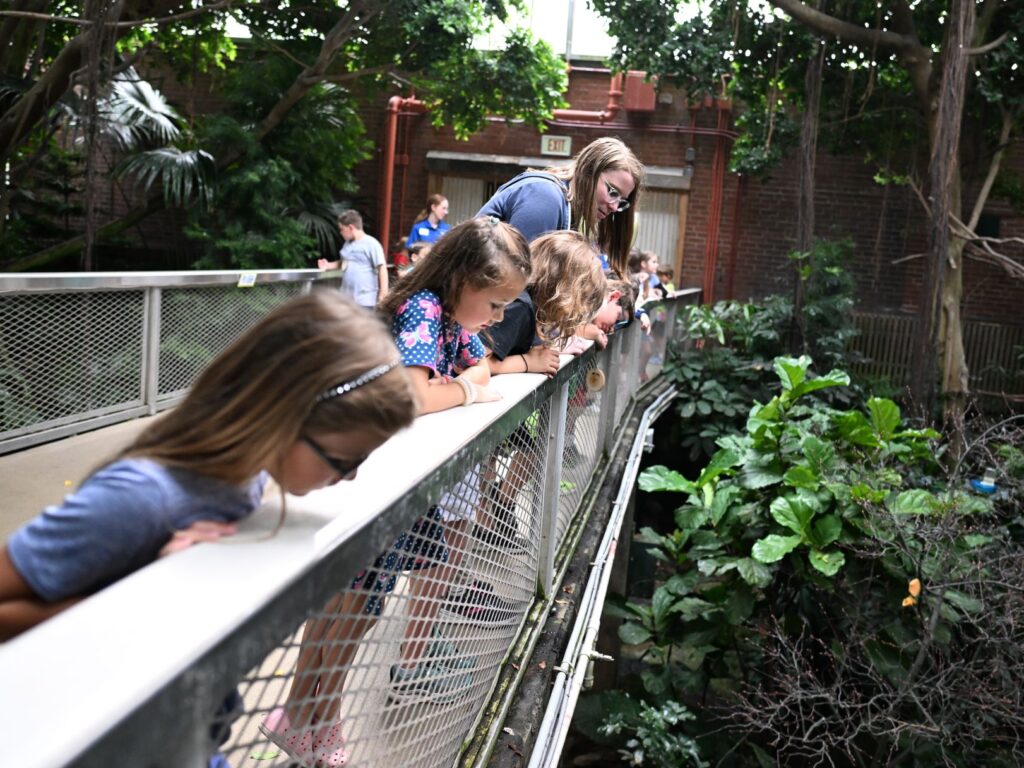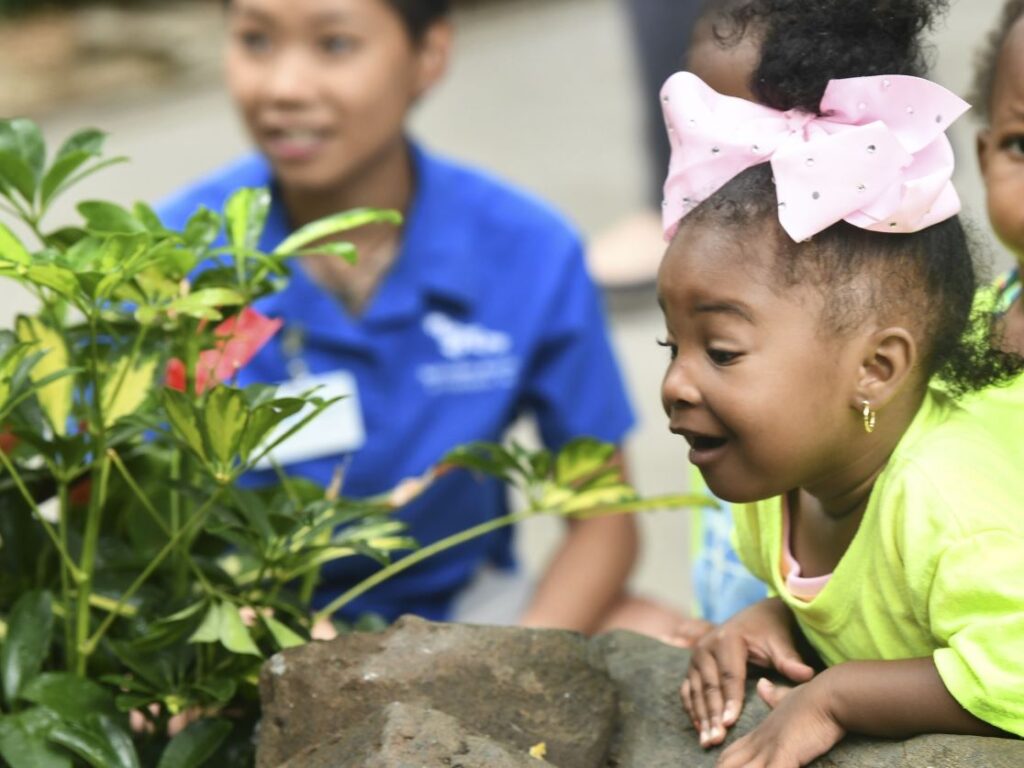National Aviary Peregrine FalconCam
Each spring and summer, the National Aviary hosts a live stream of the Peregrine Falcons residing high up on the southeast side of the Cathedral of Learning on the main campus of the University of Pittsburgh: the National Aviary Peregrine FalconCam.
2025 marked one of the most exciting seasons the livestream has had to date! Peregrine pair Carla and Ecco successfully hatched chicks in the Cathedral of Learning nest box for the second year in a row. The mates laid a clutch of eggs in April, with the first two chicks hatching on April 24—just in time for National Take Your Kid to Work Day, followed by the third on April 27.
The three hatchlings carefully grew under the watchful eyes of Mom and Dad and could often be seen napping on camera, which is vital for their development. As part of an ongoing statewide effort to monitor the Peregrine Falcon population – once on the Endangered Species List – Pennsylvania Game Commission (PGC) biologist Patricia Barber, with assistance from Aviary friend and supporter Kate St. John, completed health exams before banding the chicks in late May. The health exams included noting their weight and measurement of leg thickness, which led the PGC biologist to suspect that the two larger juveniles are likely female and the smallest is likely male.
A few weeks later, the chicks officially fledged the nest but continued to hang around the nest site as they grew comfortable flying and hunting on their own. While staying in their parents’ territory after fledging is common, returning directly to the nest box isn’t! However, the oldest chick (likely a female; recognizable through her yellow band) surprised even the most dedicated National Aviary Peregrine FalconCam viewers when she briefly perched on the nest box toward the end of June.
Later this year, after they have acquired the flying and hunting skills necessary for independent survival, they will take off on their next chapter.
We are grateful to the University of Pittsburgh and Aviary supporter Kate St. John for their continued support of this season’s live National Aviary Peregrine FalconCam.
We look forward to the 2026 National Aviary Peregrine FalconCam season and are hopeful Carla and Ecco will return for a third thrilling chapter!
More Falcon Fun!
Falconry: The Sport of Kings
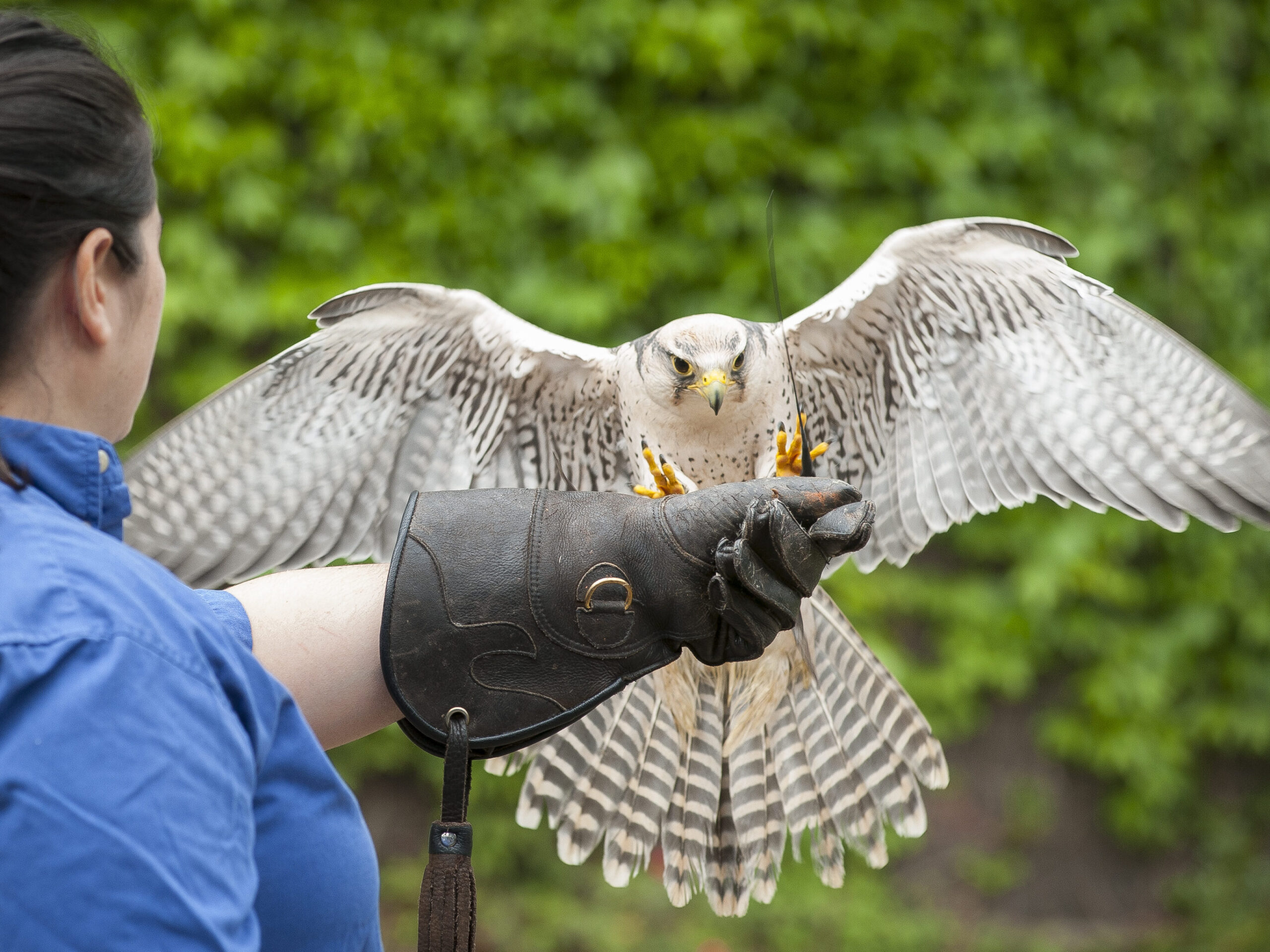
Sat., August 2 | 10 am – 12 pm
Members: $20; Non-Members: $25
National Aviary Admission Included
Dive deeper into the world of falcons! Falconry has been around for thousands of years. Join the National Aviary’s licensed falconer and Director of Animal Programs and Experiences, Cathy Schlott, to discover the rich history and modern-day practices behind this unique sport. Learn about the variety of birds falconers hunt with and the individual consideration in selecting a species while enjoying a visit from one of the National Aviary’s Ambassador Animals.
Register Today!HOLD A FALCON during a
Falcon Encounter
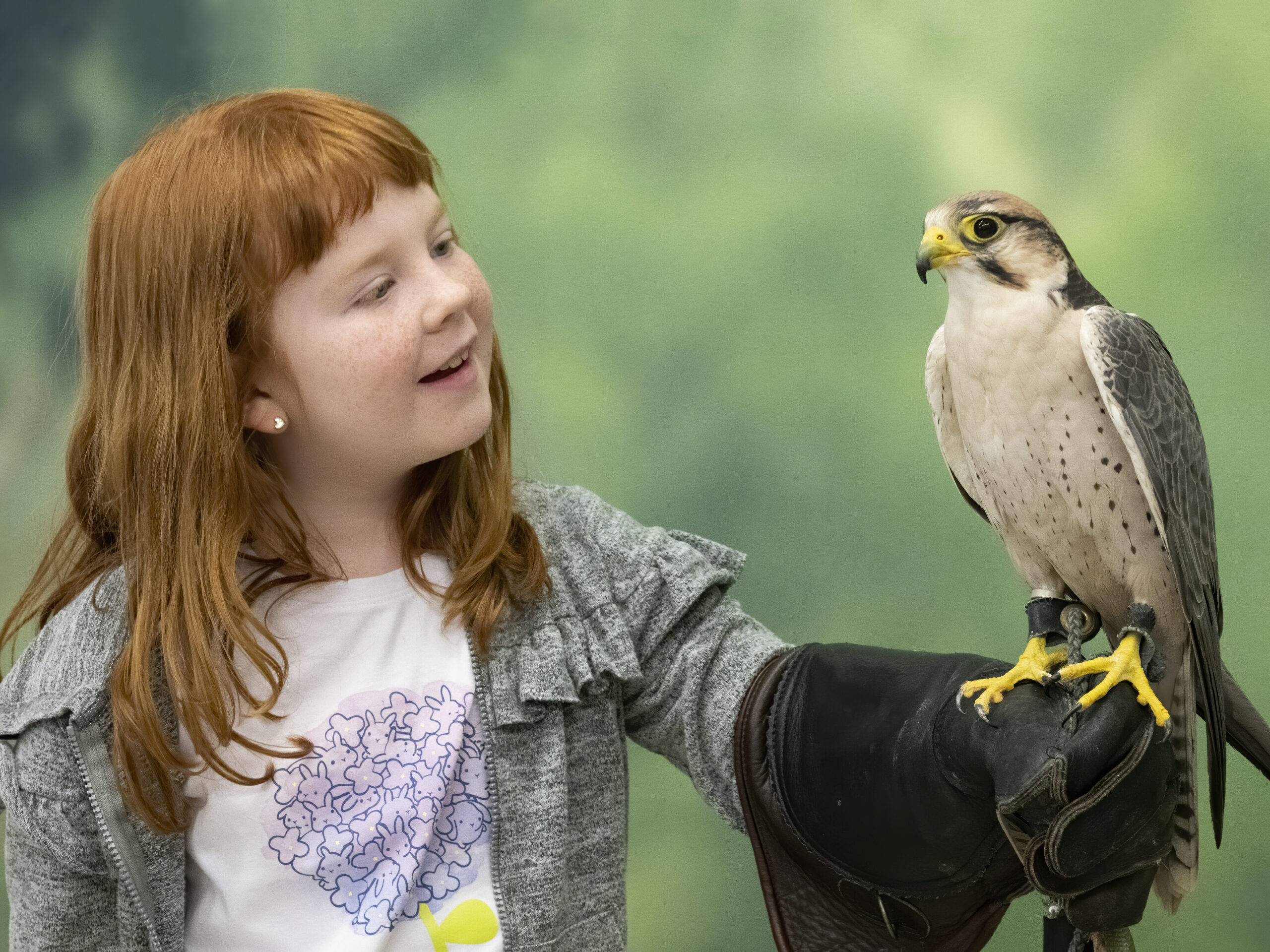
Daily, except Tuesdays at 1:30 pm
Members: $66.60 per person
Non-Members: $74 per person
Includes General Admission
Ages 6+
Get even closer to birds of prey, like a Lanner Falcon, during a National Aviary Animal Encounter! Learn about a falcon’s amazing adaptations, like how they use their strong talons and hooked beaks to help them catch prey!
Proceeds from Animal Encounters support our work to save birds and protect their habitats.
Book a Falcon Encounter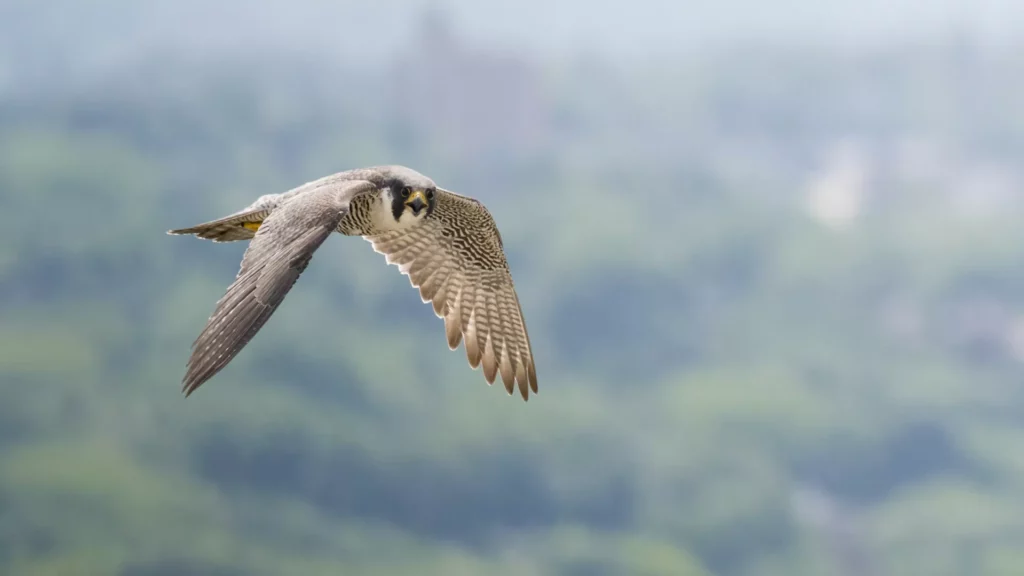
-
The History of Peregrines at Pitt
For insights into the happenings viewed on the National Aviary Peregrine FalconCam in recent years, click here.
-
More About Peregrine Falcons
Peregrine Falcons are the world’s fastest animal, capable of diving at speeds of over 200 miles per hour! These fierce birds of prey grow quickly, too. Peregrine Falcons nest on cliffs or ledges of tall buildings where they lay a group of up to four called a “clutch”, in a bowl-shaped depression in gravel.
The female Peregrine incubates the eggs for about a month, sitting on them to keep them warm. During this time, the male brings food for the female – ensuring that she stays with the eggs to keep them warm. When the chicks hatch, they are small, nearly featherless, and very dependent on their parents. But, they mature very quickly, and within a week of hatching they nearly double their size! Within a month, they go from having soft, downy white feathers to dark brown feathers, or plumage. By around 5 weeks old, they are ready to fledge the nest! Peregrine Falcons stay with their parents through the beginning of summer, learning to hunt and navigate their world.
For more news about all of Pittsburgh’s Peregrine Falcons, visit Outside My Window, Kate St. John’s Bird Blog. Thank you, Kate, for your continued support of the National Aviary Peregrine FalconCam.
The National Aviary would also like to thank the University of Pittsburgh’s Dietrich School of Arts & Sciences, the Department of Biological Sciences, and Rory Carroll for their installation support of the new camera in 2024.
Questions about Peregrine Falcons and other wild birds? Contact [email protected].
Did You Know…
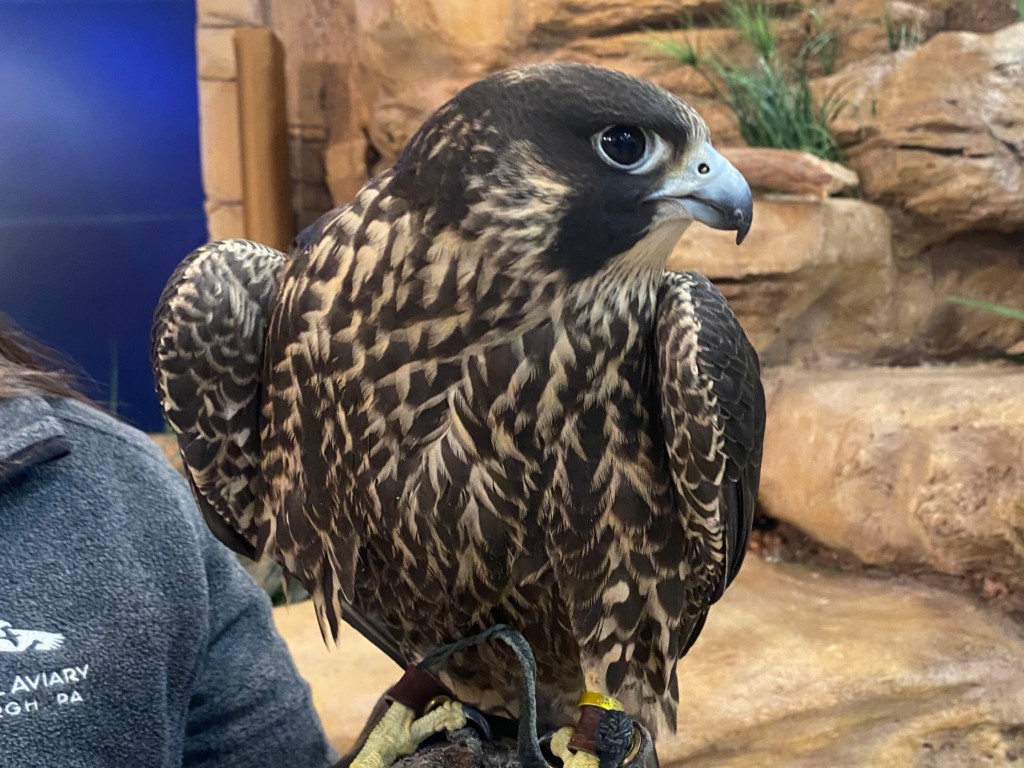
…the National Aviary is home to a Peregrine Falcon?! Want to learn how you can get even closer to him and uncover the adaptations that make his species oh-so talon-ted? Call 412-258-9439, email [email protected], or fill out our Adult Group Inquiry Form!
Interested in planning a Field Trip to the National Aviary, or having an Aviary expert visit your school? Learn more here!
